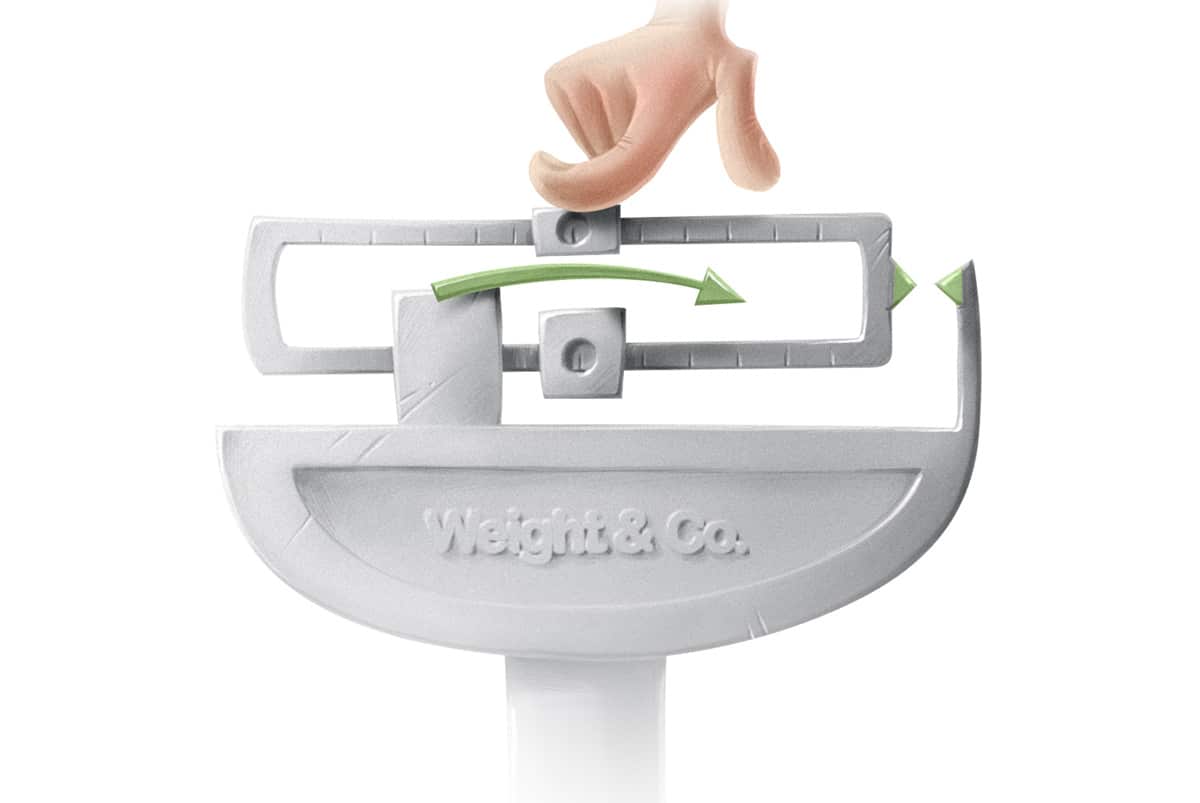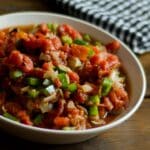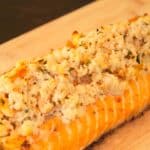
Outside of white potatoes, nuts might be some of the most hotly-disputed foods in the Paleo world. Depending on who you ask, you might hear that they’re inflammatory because of their Omega-6 content or anti-inflammatory because of their antioxidants. They might be “bad” because they’re high in lectins or “good” because they’re high in fiber.
But whole foods are so much more complicated than any one nutrient. Nuts are high in Omega-6 fats and antioxidants and fiber. And they’re not all the same, either. Specific types of nuts can be unusually high or low in different nutrients: macadamia nuts are actually pretty low in Omega-6 fats; Brazil nuts are really high in selenium; walnuts are a good source of Omega-3 fats (recent research has actually found that Omega-3s from plant sources might be more valuable than people previously thought).
All of these different nutrients affect each other in complicated ways. It’s impossible to understand the health effects of nuts by looking at just one nutrient at a time. So here’s a different way to look at the nut question: instead of counting individual nutrients, check out out some studies where real people ate nuts as part of their diet.
If you look at it that way, there’s some evidence that a snack-sized serving of nuts a few times a week is beneficial for cardiovascular health and neutral-to-positive for inflammation and weight loss. This supports the guidelines in the Paleo template: nuts can be a great snack, salad topping, or treat, but they shouldn’t be a staple food and if they don’t work out for you personally, there’s no huge drawback to cutting them out.
Nuts and Inflammation
(if you don’t know what inflammation is, here's a quick explainer to read first)
The bottom line: in real studies of actual humans eating a moderate amount of nuts, the research shows a neutral-to-beneficial effect on inflammation.
The Back-and-Forth
Nuts have some pro-inflammatory components and some anti-inflammatory components:
- Nuts might CAUSE inflammation because (except for macadamias) they’re relatively high in inflammatory omega-6 PUFA. Eating too much omega-6 fat is a big factor in inflammation and one of the main reasons why the modern diet is more inflammatory than the Paleolithic diet.
- Nuts might REDUCE inflammation because they’re rich in antioxidants, including the antioxidant vitamin E. Brazil nuts are ultra-high in the antioxidant mineral selenium. Antioxidants tend to reduce inflammation and oxidative damage.
The Research
So nuts have some pro-inflammatory aspects and some anti-inflammatory aspects. How does that play out when real people eat nuts as part of a normal diet?
This review (not funded or written by any nut industry groups) found that a moderate consumption of dietary nuts doesn't have any consistent effect on inflammation or oxidation of LDL cholesterol. The review considered studies on all different kinds of nuts (including a couple on mixed nuts). The precise amount of nuts varied from study to study, but the servings were mostly in the range of “snack-sized” (1-2 ounces) or a little larger. These were real people eating actual nuts, so it had to be something that normal people could easily work into a basically reasonable diet.
So on the one hand, it’s not like nuts have jaw-dropping anti-inflammatory powers, but on the other hand, eating nuts in snack-sized amounts doesn’t dramatically increase inflammation either.
Nuts and Cardiovascular Disease
The bottom line: Studies on real humans suggest that nuts are likely to be helpful for cardiovascular health, but the waters are a little cloudy thanks to industry funding research.
The Back-and-Forth
Inflammation is one big factor in cardiovascular disease, so people who think nuts increase inflammation probably wouldn’t see them as a very heart-healthy food. Nuts are also high in fat, and a lot of people still can’t get out of the “fat is bad for your heart” mentality (which is total bunk). But on the other hand, nuts are also rich in vitamin E, magnesium, and other nutrients that have documented benefits for cardiovascular health. So, which is it?
The Research
Unfortunately, the big recent intervention study of nuts for cardiovascular disease, the PREDIMED study, got money from the International Nut and Dried Fruit Foundation, and two of the researchers who wrote up the study results about nuts are on the scientific boards of industry groups.
If that doesn’t bother you, then the study’s findings are encouraging. In people who were already eating a Mediterranean diet to start with, adding 3 or more servings of nuts per week significantly reduced the risk of death from cardiovascular disease. In other words, even people who eat a generally good diet in other ways benefitted from adding nuts. Walnuts stood out as particularly good.
That finding is consistent with this non-industry-funded review of prospective studies (the next-best thing to intervention studies), which concluded that eating nuts reduces the risk of ischemic heart disease and cardiovascular disease more broadly.
Nuts and Weight Loss

The bottom line: nuts are likely to be neutral-to-positive for weight loss - don’t write them off just because they’re high in calories.
The Back-and-Forth
On the one hand, nuts are relatively high in calories and a lot of people find them very easy to overeat without realizing it, especially in the form of baked goods made with nut flour. On the other hand, nuts are high in fiber and other nutrients that make them very filling relative to their calorie count, unlike junk food. Survey studies have regularly found that people who eat more nuts tend to be thinner, but associations don’t prove causation! Instead, take a look at some other kinds of studies.
The Research
This paper is one of the few reviews of nuts and weight loss that isn’t funded by any industry groups or written by researchers who sit on any industry councils. The review found that a snack-sized serving of nuts every day had no consistent effect on weight - sometimes the subjects’ weight didn’t change and sometimes they lost a little bit of weight.
Now here’s the interesting part: in a couple of these studies, the researchers expected the nuts to cause weight gain by adding total calories to the diet. But something about the nuts seemed to mitigate that effect. It seems like the calories in nuts might be harder to absorb or use than the calories in most other foods. In other words, nuts aren’t a magical weight-loss superfood, but maybe they don’t belong in the same category of “calorie-dense foods” as potato chips and cheesecake. Overall, studies in actual people eating nuts show that a moderate amount of nuts is neutral-to-beneficial for weight loss.
Final Recommendations
Overall, these studies support nuts as an optional food. Eating nuts in modest amounts probably contributes to better health but isn’t totally critical.
- A snack-sized amount of nuts every day is more likely to help than hurt, especially for cardiovascular health.
- Research suggests that moderate nut consumption doesn’t cause any serious inflammation issues, possibly because the anti-inflammatory factors in nuts balance out the Omega-6 fats (this is the difference between whole foods like nuts and refined foods like soybean oil!).
- If you personally find that nuts don’t work for you (e.g. you always end up binging on them), or if you just don’t like them, you’re not missing anything critical by leaving them off your plate completely.
Overall, this research supports the guidelines in the Paleo template: eat nuts (if you eat them) as snacks, salad toppings, and treats, and don’t use nut-flour baking as a cornerstone of your daily diet.





Leave a Reply